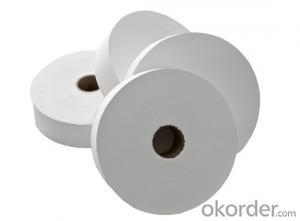Carbon Fiber Honeycomb Sandwich Panels: The Future of Composites
The world of materials science is a fascinating realm where innovation and creativity intersect to push the boundaries of what’s possible. In this ever-evolving landscape, one material stands out as a beacon of modern engineering: Carbon Fiber Honeycomb Sandwich Panels. These lightweight, yet incredibly strong composites are revolutionizing industries from aerospace to automotive, and even architecture. Let’s dive into the world of these wonder materials and explore their potential to shape the future.
The Essence of Strength and Lightness
Imagine holding a material that is as light as a feather but as strong as steel. This is the magic of carbon fiber honeycomb sandwich panels. Made from thin layers of carbon fiber composites with a lightweight honeycomb core, these panels are designed to provide exceptional strength-to-weight ratios. The honeycomb structure adds stiffness and resistance to deformation while keeping the overall weight low. It’s a perfect blend of strength and lightness, making them ideal for applications where weight savings are crucial.
Aerospace and Beyond
In the aerospace industry, every gram counts. Aircraft manufacturers are constantly seeking materials that can reduce the overall weight of the aircraft without compromising on safety and performance. Carbon fiber honeycomb sandwich panels have been a game-changer in this regard. They are now widely used in the construction of aircraft interiors, wings, and even entire fuselages. The benefits are clear: reduced fuel consumption, lower emissions, and increased payload capacity.
The Automotive Revolution
The automotive industry is not far behind in embracing this technology. From high-performance sports cars to fuel-efficient hybrids, carbon fiber honeycomb sandwich panels are finding their way into vehicle components. They are used in the manufacture of lightweight chassis, spoilers, and body panels, contributing to improved fuel efficiency and reduced emissions. The future of driving is looking lighter and greener, thanks to these composites.
Architecture and Construction
In the field of architecture and construction, these panels are making their mark as well. They offer a combination of high strength, durability, and resistance to environmental factors, making them perfect for modern building designs. Architects are leveraging their properties to create innovative structures with large spans and minimal materials, pushing the boundaries of what’s possible in construction.
Sustainability and the Environment
One of the most compelling aspects of carbon fiber honeycomb sandwich panels is their potential for sustainability. Unlike traditional materials, these composites can be recycled, reducing waste and the environmental footprint of manufacturing processes. Moreover, their lightweight nature contributes to the reduction of fuel consumption and emissions across various industries, making them an eco-friendly choice.
The Challenges Ahead
Despite their numerous advantages, there are challenges that come with the widespread adoption of carbon fiber honeycomb sandwich panels. The production process can be complex and costly, which can be a barrier for some industries. Additionally, the recycling infrastructure for these materials is still in its early stages, requiring further development to fully realize their sustainable potential.
The Future Looks Composite
As we look to the future, the role of carbon fiber honeycomb sandwich panels in shaping the world around us is undeniable. From soaring skyscrapers to fuel-efficient vehicles, these materials are set to play a pivotal role in the evolution of design and engineering. The key to unlocking their full potential lies in continued research, development, and a commitment to sustainability.
In conclusion, carbon fiber honeycomb sandwich panels are not just materials; they are the embodiment of innovation, strength, and sustainability. As we continue to explore their capabilities and overcome the challenges that lie ahead, we can expect to see them becoming an integral part of our lives, making the world a lighter, stronger, and greener place.

